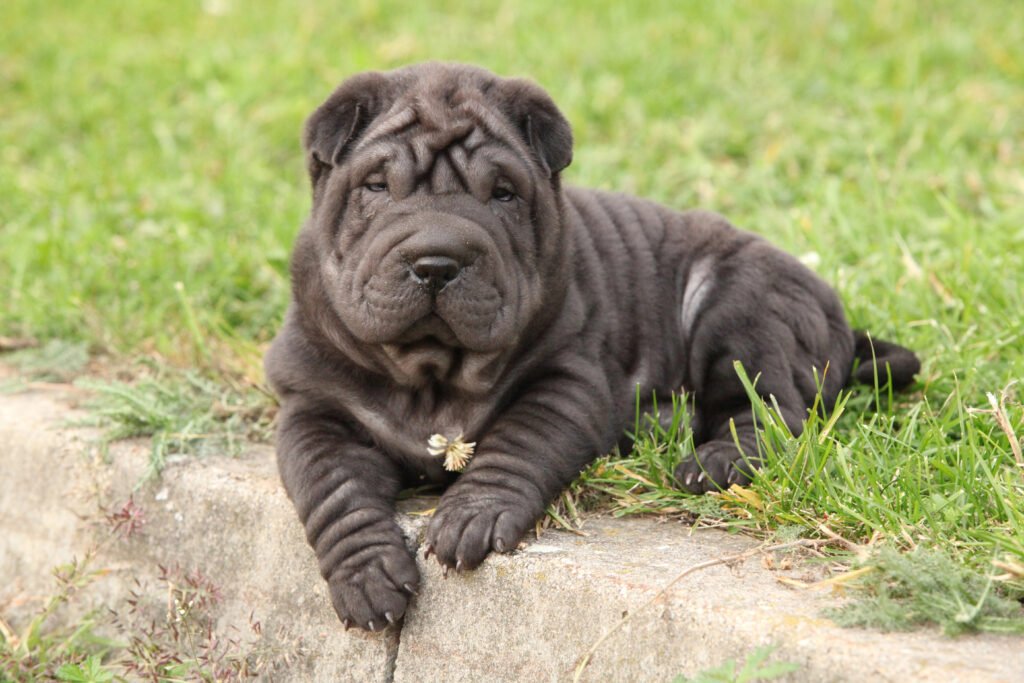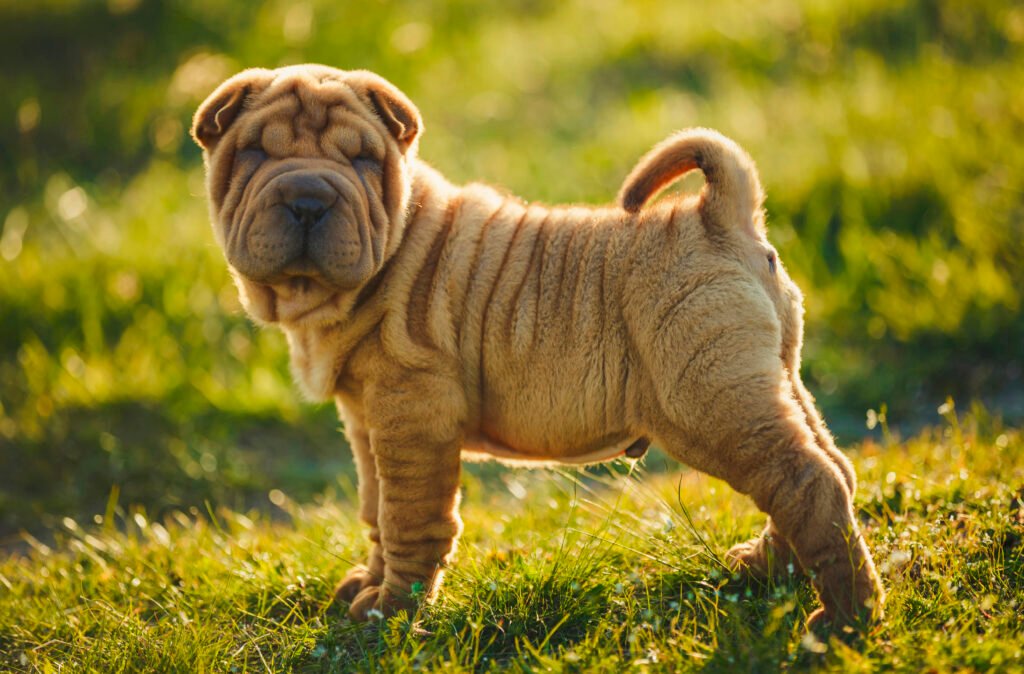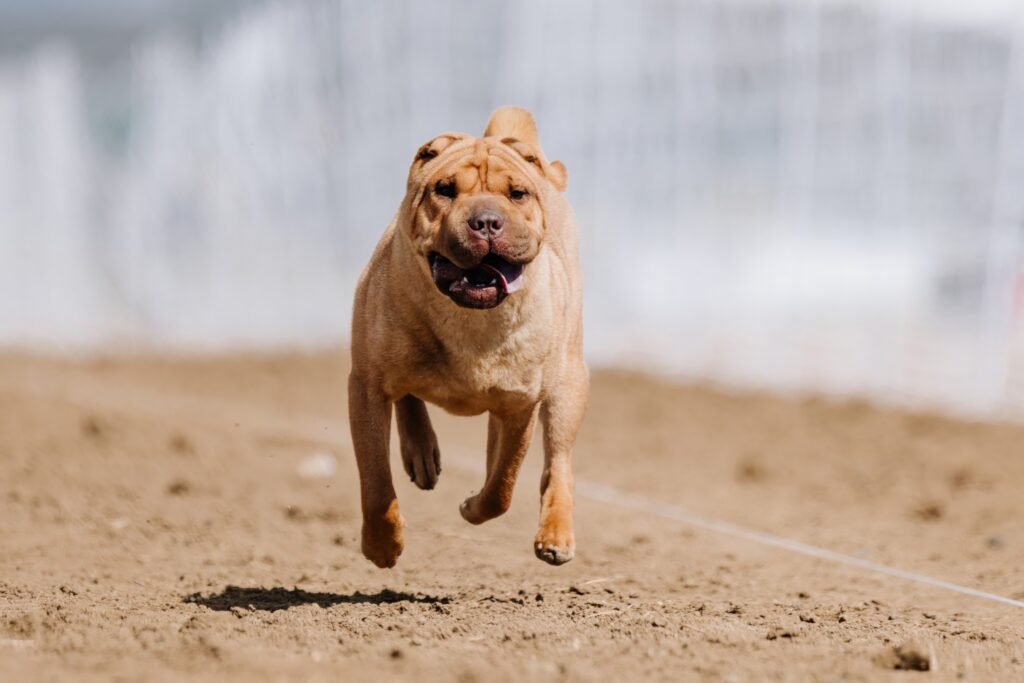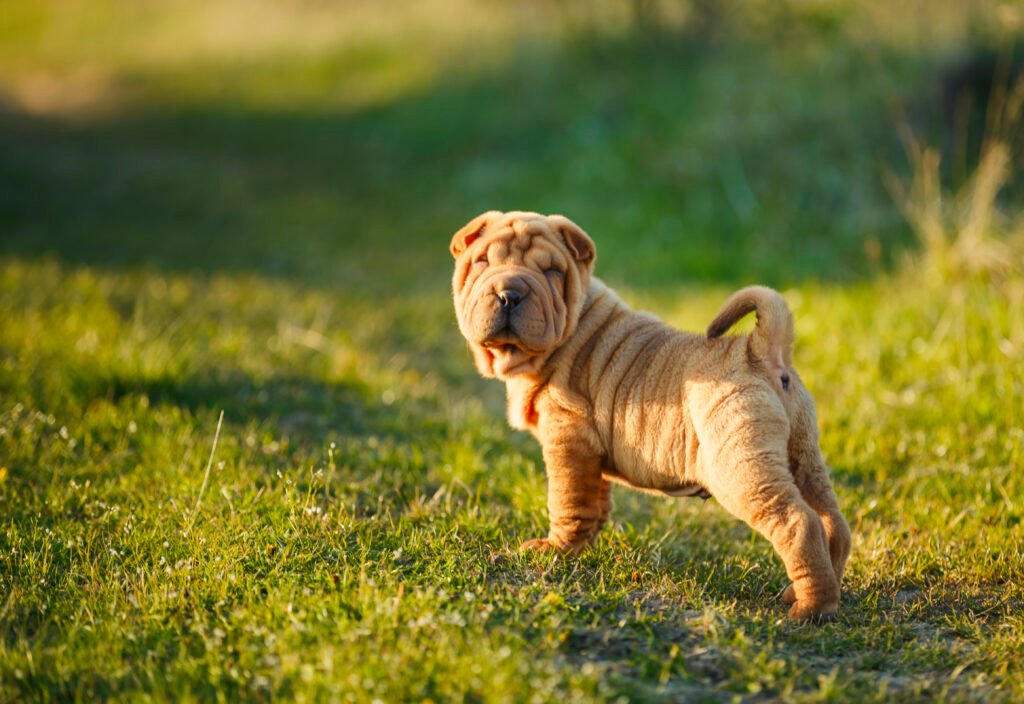The Shar Pei is an ancient dog breed that boasts a rich history tracing back over 2,000 years. Originating in the southern provinces of China, these dogs were initially bred for hunting and guard duties. Their distinctive appearance and unique skin folds made them a favorite among Chinese farmers, where they served as protectors and companions. Over the centuries, the breed’s popularity waned to the brink of extinction, only to be revived in the mid-20th century through dedicated breeding efforts.
Unique Physical Appearance

The Shar Pei is easily recognizable due to its unique and wrinkled skin. These deep folds are not only charming but have a functional origin. Historically, the loose skin and wrinkles were advantageous in dogfights, as they made it harder for opponents to get a firm grip. Besides the wrinkles, Shar Peis also have a distinctive “hippopotamus” face, a blue-black tongue, and a curled tail.
Temperament and Personality

Despite their sometimes scowling expression, Shar Peis are known for their calm and reserved demeanor. They form strong bonds with their families and are particularly protective, making them excellent watchdogs. However, they tend to be wary of strangers and can be aloof, requiring proper socialization from a young age to ensure they grow into well-rounded companions.
Challenges in Breeding

Shar Pei breeding entails unique challenges due to their historical near-extinction. To save the breed, only a small number of these dogs were available, resulting in a limited genetic pool and subsequent health concerns. Breeders today strive to maintain breed standards while mitigating potential hereditary issues through responsible breeding practices and genetic testing.
Health Concerns and Care

Shar Peis, like many purebred dogs, are prone to specific health problems. Their distinctive skin folds require diligent care to prevent infections. Additionally, they may suffer from conditions such as hip dysplasia, entropion (a disorder affecting eyelids), and Shar Pei fever. Regular veterinary checkups and proper grooming are important preventive measures to ensure a healthy and happy life for these dogs.
Exercise and Training Needs

While Shar Peis are relatively low-energy compared to other breeds, they still require regular exercise to maintain physical and mental well-being. Daily walks and interactive play sessions usually suffice. Training should begin early, focusing on positive reinforcement techniques to address the breed’s characteristic stubbornness and enhance socialization.
Shar Pei’s Role in Culture

The Shar Pei holds a special place in Chinese culture, often depicted in art and literature as symbols of prosperity and protection. Their historical roles in society as guardians and companions are celebrated, reflecting a long-standing relationship between humans and these distinctive dogs.
Popularity and Media Representation

Following their reintroduction to the world in the 1970s, Shar Peis rapidly gained popularity, particularly in Western countries. They’ve been featured in various mediums, from movies and television shows to advertisements, where their unique look never fails to capture attention. Despite fluctuations in popularity, they remain a beloved breed among enthusiasts worldwide.
Importance of Socialization

Due to their natural wariness of strangers, effective socialization is crucial for the Shar Pei. Early exposure to different environments, people, and other animals can ensure they develop into well-adjusted adults. Training that emphasizes positive interaction and reduces defensive tendencies is essential, particularly in multi-pet households and urban settings.
Adoption and Rescue Opportunities

For those interested in welcoming a Shar Pei into their home, adoption and rescue offer meaningful options. Many organizations are dedicated to rehoming these dogs, providing them a second chance at life. Prospective owners are encouraged to consider adoption, where they might find a loving companion while aiding in the responsible stewardship of the breed.

Born and bred in South Africa, a Capetonian at heart. Amy-Leigh’s love for nature and animals was inherited from her Dad. He loves taking the family on road trips to experience nature at its finest; Amy-Leigh’s favourite being whale watching in Hermanus and spotting Kudu along the West Coast. Amy-Leigh holds a BA in English Literature and Communication Studies.






